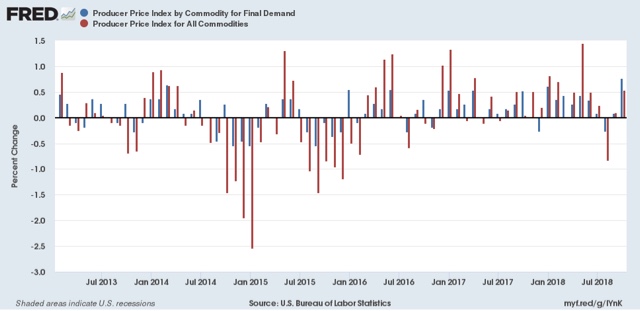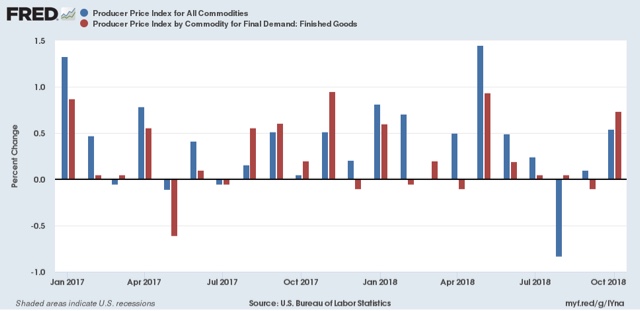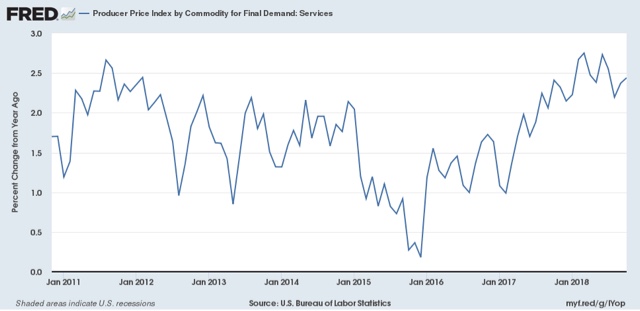Big producer price increase in October – if a trend – is a problem In a light data week, this morning’s report on producer prices is certainly worth mentioning. As you may have read elsewhere, headline producer prices rose +0.6% in October, the highest reading in 6 years. The below graph compares that (blue) with commodity prices (red): As you can see, commodity price increases were within the normal range. The difference happens when we break down final demand by goods (first graph below, in red) vs. services (second graph): Producer prices for services were among the 4 highest monthly readings in the past 6 years. This is important for several reasons. First of all, producer prices tend to bleed over into consumer prices. But even
Topics:
NewDealdemocrat considers the following as important: US/Global Economics
This could be interesting, too:
Joel Eissenberg writes How Tesla makes money
Angry Bear writes True pricing: effects on competition
Angry Bear writes The paradox of economic competition
Angry Bear writes USMAC Exempts Certain Items Coming out of Mexico and Canada
Big producer price increase in October – if a trend – is a problem
In a light data week, this morning’s report on producer prices is certainly worth mentioning. As you may have read elsewhere, headline producer prices rose +0.6% in October, the highest reading in 6 years. The below graph compares that (blue) with commodity prices (red):
As you can see, commodity price increases were within the normal range.
The difference happens when we break down final demand by goods (first graph below, in red) vs. services (second graph):
Producer prices for services were among the 4 highest monthly readings in the past 6 years.
This is important for several reasons.
First of all, producer prices tend to bleed over into consumer prices. But even more importantly at this point, is the potential reaction from the Fed.
If I am right and the economy slows next year, then it is important whether or not the Fed feels free to react by lowering interest rates. That is what happened in 1984, 1995, and 1997. But if the Fed thinks that inflation is beginning to accelerate, it will probably feel that it has no choice but to continue raising rates, even in the face of economic weakness.
In that regard, it is worth pointing out that, despite the monthly increase, YoY producer inflation does not appear to be accelerating on any basis:





